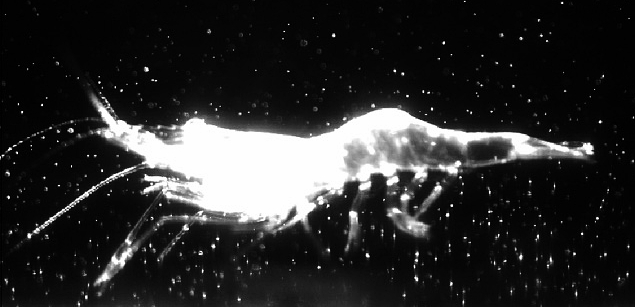
High-speed videos are used to obtain pleopod kinematics in ghost shrimp individuals. This data is used to drive robotic models for mechanistic studies of metachronal swimming.
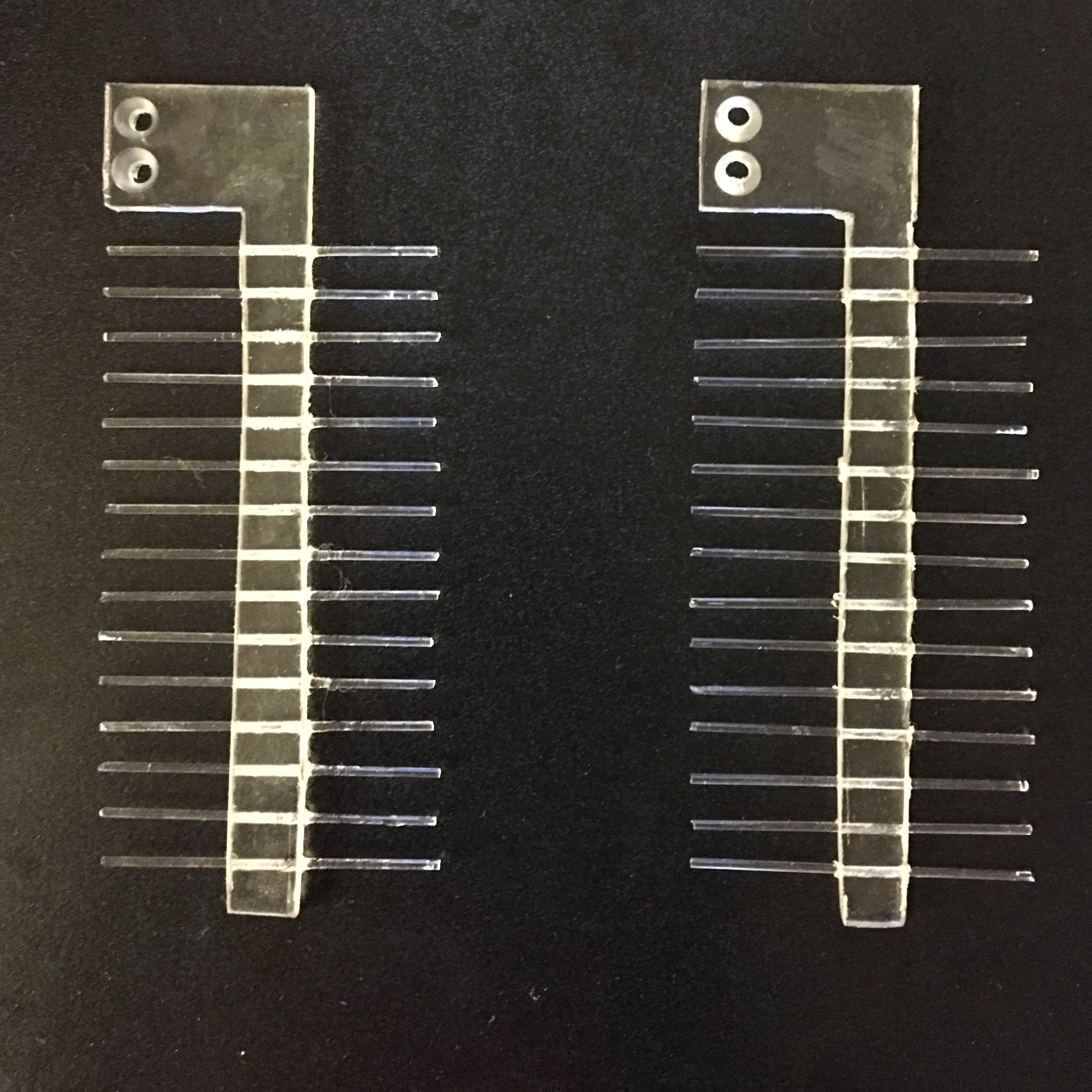
Many tiny insects (size < 1 mm) that fly use bristled wings. We examine the underlying aerodynamics using physical and computational modeling.

A robotic platform of 'clap and fling' interaction is used to provide kinematics corresponding to flapping flight in tiny insects with bristled wings. Leading edge vortices (at the top) are observed when the wings rotate about their trailing edges (at the bottom).

Dye injected along sandy surface is pulled sideways by pulsing jellyfish and moved vertically into the water column. Oral arms of the medusa aid in breakup of coherent large-scale vortices.
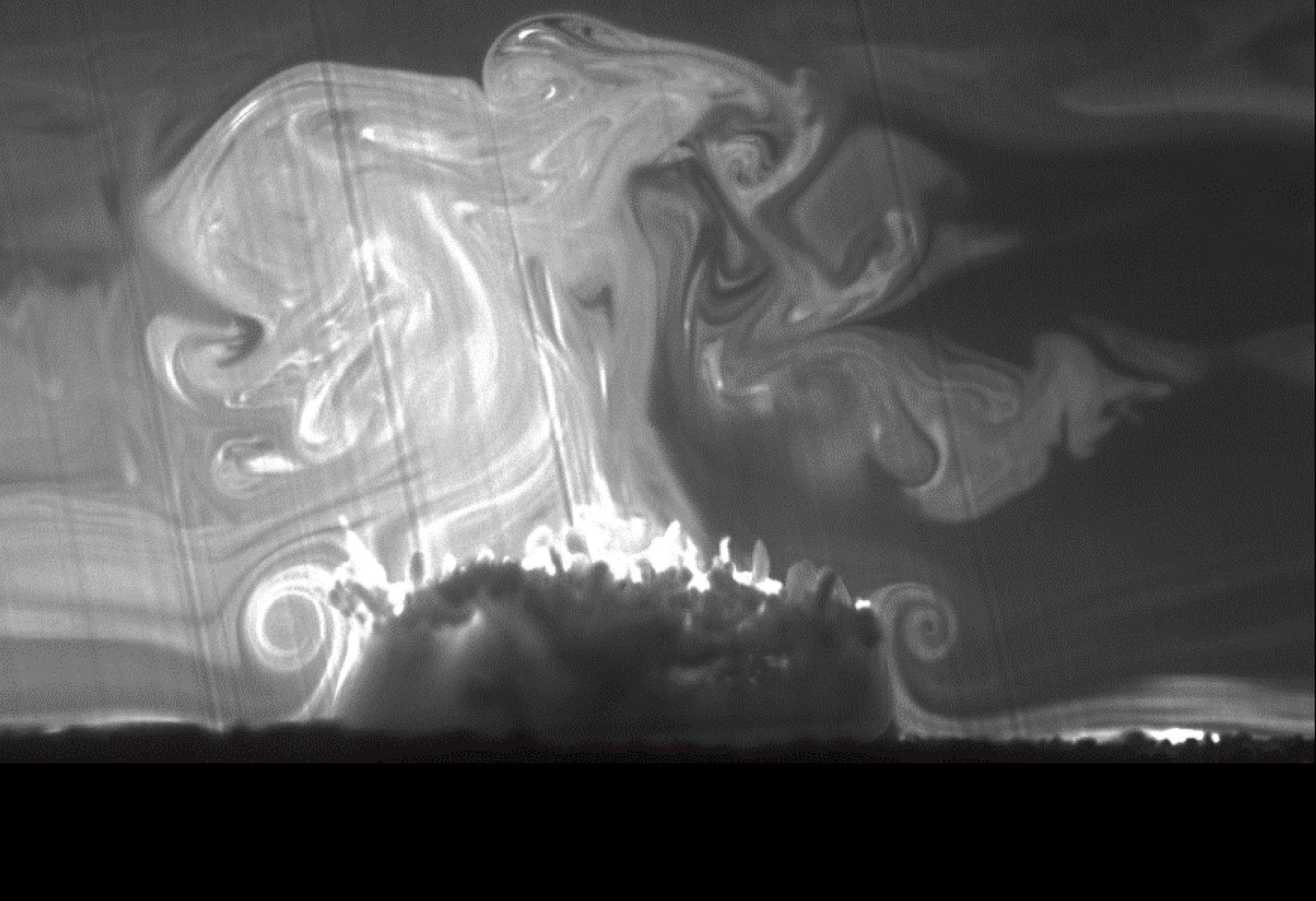
Fluorescent dye buried underneath sandy substrate is released into the water column by bell pulsations of upside-down jellyfish.
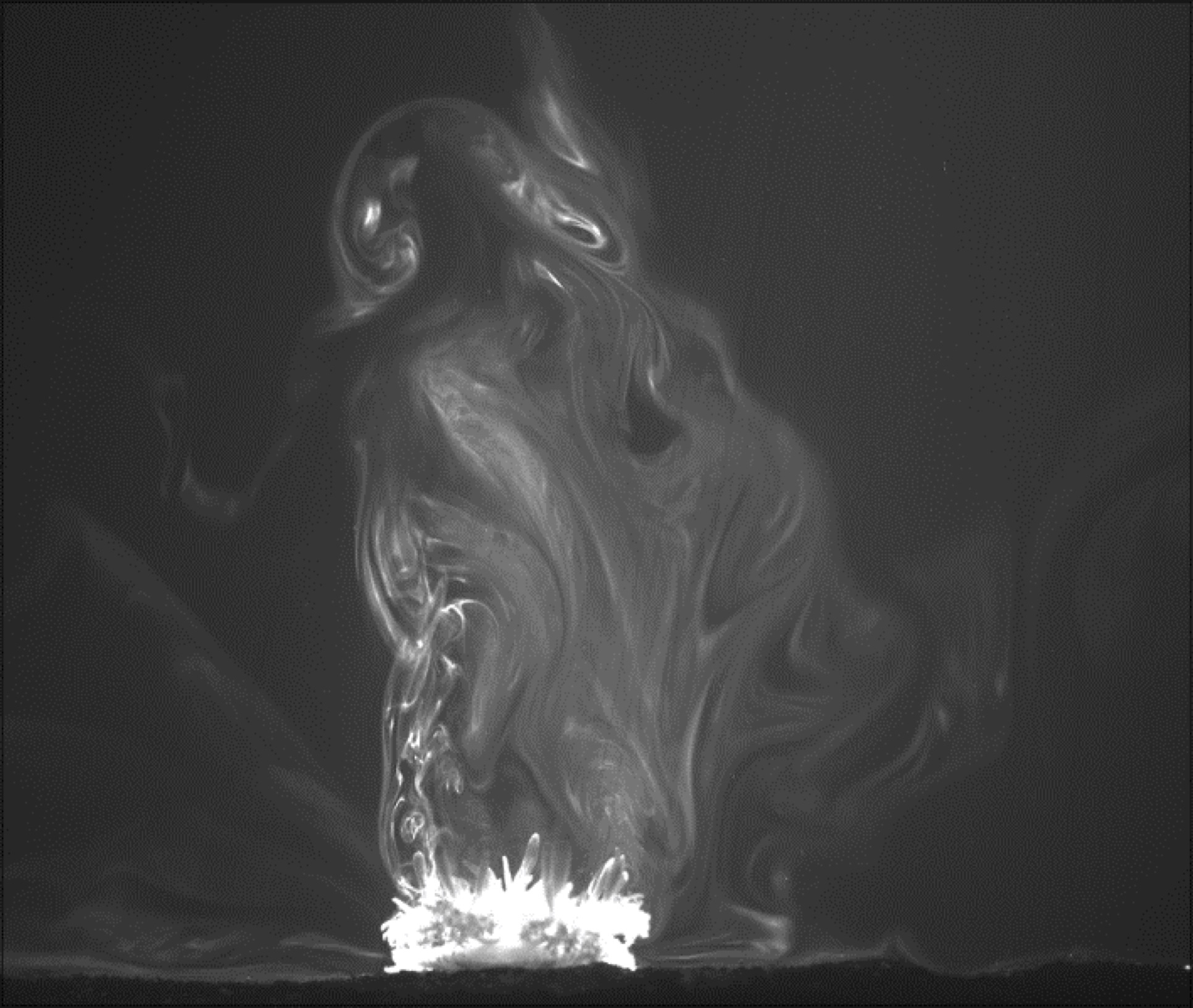
Vertical mixing effected by pulsing activity of upside-down jellyfish is visualized using planar laser induced fluorescence.
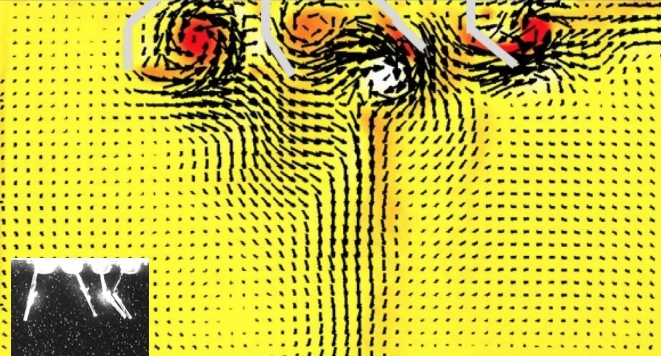
Hydrodynamic interactions in between neighboring swimming limbs (pleopods) in metachrony are studied using a robotic platform (inset image) that is outfitted with physical models of hinged pleopods.

Flexible-walled physical model of the human left ventricle illuminated using a green laser sheet for visualization of fluid flow.
